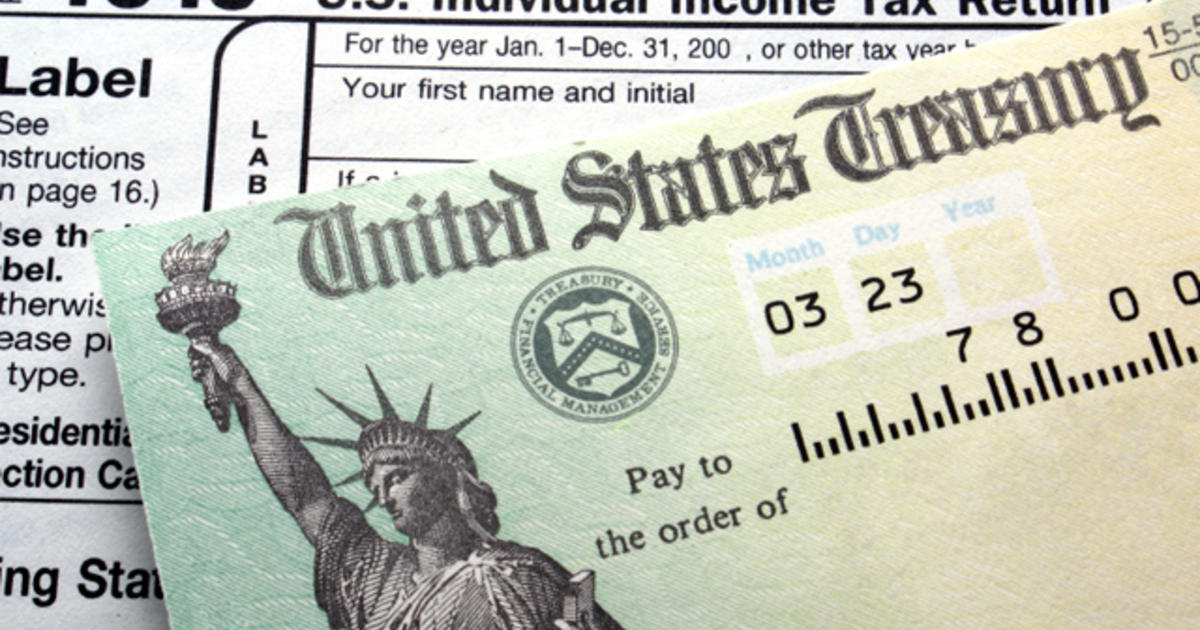A one-time tax break is available to millions of low-income Americans this tax season, and it has the potential to save them significant amounts of money.
The federal Earned Income Tax Credit, which is intended to help people in low-wage employment, is being increased for a group of workers who generally do not benefit from it: childless adults, as part of a bipartisan effort.

Low-income workers without children can claim a credit of up to $1,500 for the tax year that just concluded, which is nearly three times the amount of the benefit that will be available in 2020.
The American Rescue Plan, a $1.9 trillion pandemic relief bill enacted into law by President Joe Biden last year, increased the credit amount, raised income limitations, and elevated the age of workers who are eligible for the credit in 2020 and 2021.
For the first time, the credit is available to both younger employees and senior residents, according to an IRS blog post written by Gwen Garren, director of refundable credits program management.
Individuals aged 19 and older who earned money last year and who are not enrolled as full-time students can take advantage of the increased credit this year, which is available during tax season.
Who is eligible to participate?
The American Rescue Plan increased the number of people who can receive the Earned Income Tax Credit (EITC) by raising income restrictions for childless employees.
People who have earned up to $21,430 through a job, gig, or self-employment can claim the credit when they submit their tax returns this season if they do not have children. The EITC is not available to workers who earn more than approximately $16,000 per year in most years.
Taxpayers can also choose to use income from 2019 in order to qualify for the credit, which is advantageous for people who lost their jobs in the following year.
In addition, the IRS has eliminated the EITC age restrictions that were in place in previous years. Previously, it was only available to employees between the ages of 25 and 64.
Anyone 19 or older who satisfies the income requirements for the credit this year, as well as 18-year-olds who are homeless or have been in foster care, may be eligible for the credit.
“The American Rescue Plan allows anyone 19 and older who is not enrolled in a full-time program [and] who has earned income to claim the enhanced Earned Income Tax Credit (EITC).
It increased the eligibility age and income ranges, as well as the size of the credit “Kris Cox, deputy director of federal tax policy at the Center on Budget and Policy Priorities, a left-leaning think tank, explained the situation.
Policy analysts predict that between 17 and 20 million workers will gain from the increased credit, including older and younger workers who would otherwise not be eligible for credit, as well as those who will receive more money than they would have received in previous years.
“It has been completely excluded.”
The Earned Income Tax Credit (EITC) has been dubbed the most effective anti-poverty program in the United States, with around 20 million households benefiting from it in 2019.
The program, which was initially implemented under President Gerald Ford, is intended to recognize and reward hard effort, and it has been credited with bringing more than 5 million individuals out of poverty.
The EITC, in contrast to many other tax credits, which can only be used to reduce a person’s income tax liability to zero, is refundable. This means that it puts money in the pockets of workers even if they do not owe any taxes.
Workers who do not have children, on the other hand, receive a minor credit for the majority of years. A single worker had to earn $15,800 or less in order to qualify for the tax cut in 2017, and the highest credit available to individuals was only $540.
A single parent of two children earning the same $15,800, on the other hand, would qualify for a $5,800 credit.
As Kris Cox, deputy director of federal tax policy at the Center on Budget and Policy Priorities, explained, “what this meant was that people who worked for very low pay and received such a meager EITC, as well as young working adults and older working adults, were completely excluded” from receiving EITC benefits.
Because of the lesser value of the EITC for childless employees, those individuals are less likely to claim the credit, despite the fact that they are eligible for it. According to Cox, around two-thirds of eligible childless taxpayers claim the EITC every year, compared to more than 80 percent of taxpayers who have children in their household.
Meanwhile, the increased credit comes at a time when many Americans are grateful since soaring inflation has wiped out the majority of wage increases for low-income employees.
“These individuals do not have dependent children, and hence do not have to worry about the cost of childcare, but they do have to spend extra for food, gas, and rent.
These necessities may be out of reach for those who are in this situation “Aidan Davis, a senior state policy analyst at the Institute on Taxation and Economic Policy, spoke with CBS MoneyWatch on state taxation and economic policy.
Worker-supported organizations are trying to make the move permanent, and a one-year extension is included in the Build Back Better Act, which was passed by the House of Representatives last week.
Investment income limits have increased.
Until this year, the Earned Income Tax Credit (EITC) was only available to workers with an investment income of $3,650 or less. This year, the maximum has been raised to $10,000, which means that employees who receive money as a result of interest, dividends, or the sale of investments can still claim the Earned Income Tax Credit.
This change, in contrast to other changes to the tax credit, is permanent: The $10,000 cap will remain in effect indefinitely and will be adjusted to account for inflation.
How to Make a Claim for the Credit
Most commercial tax software will ask filers a series of questions about their income in order to determine whether or not they qualify for the Earned Income Tax Credit.
Taxpayers should not be required to pay any fees in order to claim the credit. In addition, anyone with an income that is low enough to qualify may be able to file their tax returns for free, either through the IRS’s Free File program or at one of the hundreds of volunteer-run tax prep sites located throughout the country.
In the case of paper returns or fillable forms being submitted through Free File Fillable Forms, the EITC is included on Form 1040, and no further paperwork is required. It is necessary to file a Schedule EIC for taxpayers who have children.
How long you’ll have to wait is up to you.
Taxpayers who claim the Earned Income Tax Credit (EITC) frequently have to wait longer than other filers to begin receiving their refunds — by law, these refunds must be held until mid-February in order to give the IRS additional time to review the claims.
Taxpayers should be aware that even if they file their taxes as soon as tax season begins, they will not normally receive their refunds until mid-March.
After that period, EITC claimants should not have to wait any longer than the rest of the taxpaying public to receive their funds. The majority of filers will receive their refunds in 21 days or less, providing they file electronically, in most cases.
Many taxpayers, on the other hand, will most likely have to wait for a little longer this year. Because of an abnormally high backlog of tax returns from previous tax seasons, the Internal Revenue Service (IRS) is experiencing “enormous hurdles,” according to the agency’s commissioner.
States also provide tax breaks for people who make an income.
The Earned Income Tax Credit is a federal credit that is supplemented by state credits that are similar to the federal credit. Residents of 28 states and the District of Columbia will be able to claim an additional — and typically lesser — credit against their state taxes this year, according to the IRS.
As a result, state credits differ significantly in terms of the income levels and types of households who are eligible, as well as the amount of money that is returned.
Depending on an individual worker’s circumstances, a state’s Earned Income Tax Credit could increase the value of their federal credit by 3 percent (as in Montana) or double the value of their federal credit (as in California) (for childless workers in Washington, D.C.)




